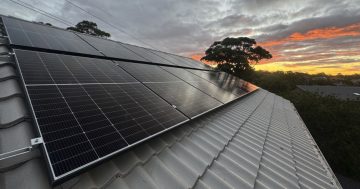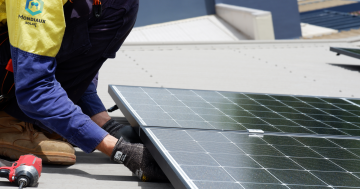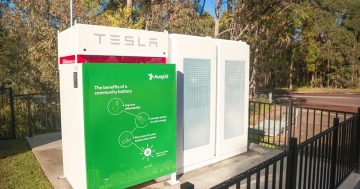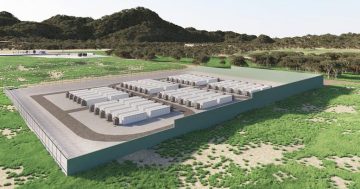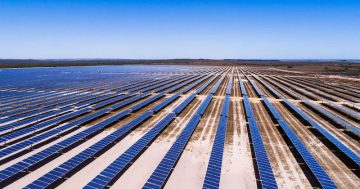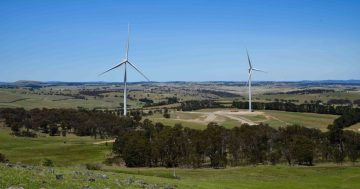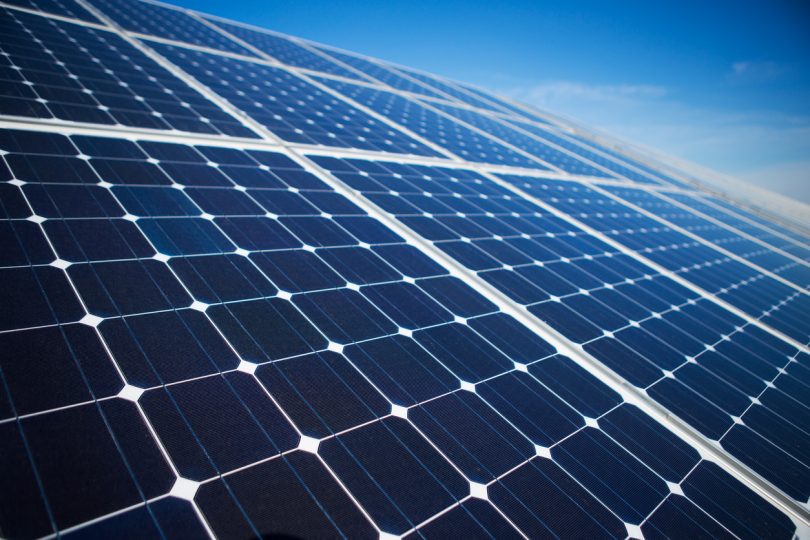
On 1 December, Tesla’s large-scale battery came online in South Australia. This has overshadowed an exciting development in Canberra where, over the past week, batteries in households across the ACT have fed their stored energy into the grid for the first time.
It is part of a trial ‘Virtual Power Plant’ by ActewAGL Distribution and company ‘Reposit Power’. During the event, Reposit-enabled batteries fed clean energy into the grid, and in return consumers were provided with a higher feed-in tariff.
This follows the motion I moved in the Legislative Assembly in October to encourage energy providers in the ACT to accommodate battery storage and make available the distributed battery power to the grid during times of peak demand.
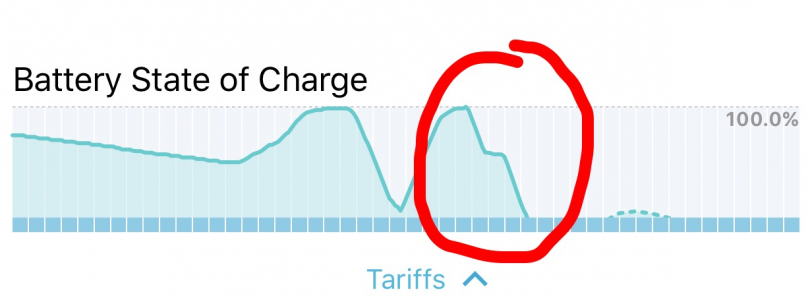
Battery storage is the key to a sustainable future. Photo: Supplied.
Solar panels have for a long time provided significant cost savings on electricity bills for Canberra households and businesses. More than 16,000 homes in Canberra, as well as every public school, have solar panels installed on their roofs. Adding a battery to a solar PV system can provide further savings for households, but now – thanks to this new development – can also allow energy providers to harness the stored energy and support the stability of the broader energy network.
The ACT is already a leader in the renewable energy sector. Following a successful pilot program in 2016, the ACT Government is investing $25 million for battery storage systems under the Next Generation Renewables program for Canberra households and businesses, making it one of the largest roll-outs of battery storage in the world.
This is timely because the National Electricity Market is undergoing the most significant transformation since its inception with the integration of renewable energy into the electricity grid.
A recent report from the Australia Institute found that households will increasingly produce electricity for storage and sale, as the uptake of battery systems becomes more prevalent. When demand for electricity increases, the electricity grid can draw on stored household energy when it is needed, providing stability to the electricity market and supporting a stable transition to renewable energy.
The Virtual Power Plant trials allowed consumers to actively participate in the National Electricity Market for the first time, providing a premium on battery power of $1 per kWh compared with 11c currently provided under the solar feed-in tariff.
The Virtual Power Plant conducted by Reposit Power held two trials so far, lasting two hours on 24 November and 30 November.
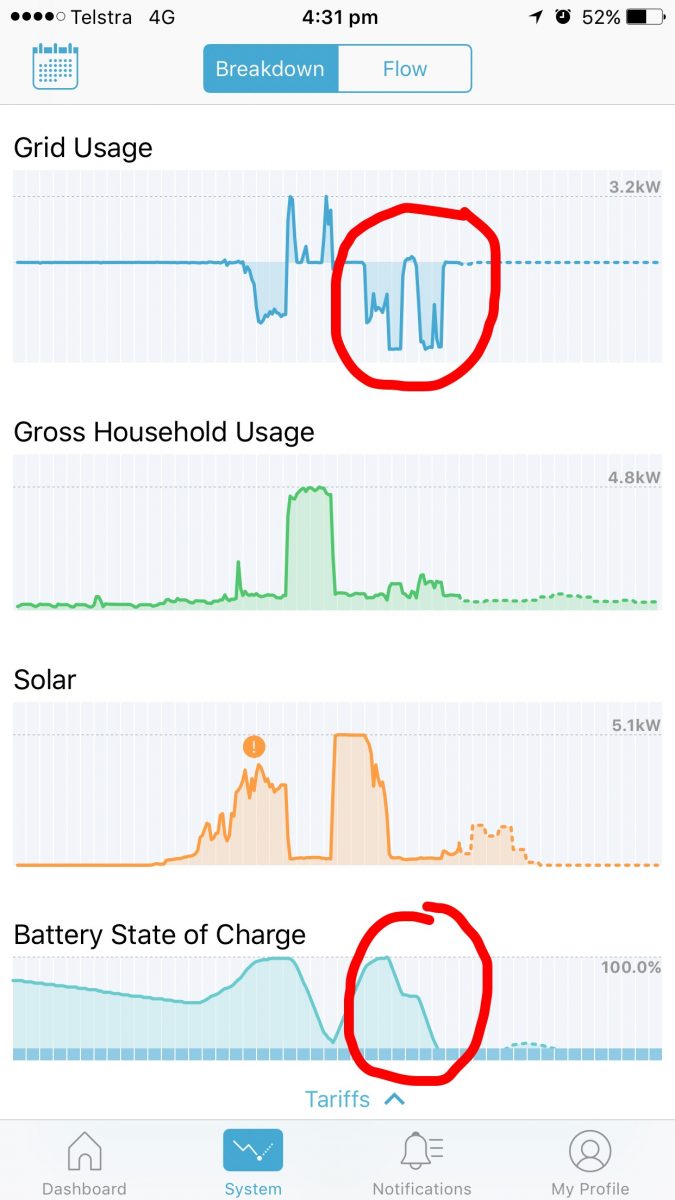
Here’s what it looked like from the consumer end. The areas marked in the circles shows the battery discharging into the grid during the Virtual Power Plant event. Photo: Supplied.
Up until this point, batteries installed in homes only stored energy for use within the individual household, rather than feeding into the grid during times of peak demand.
Consumers with Reposit-enabled batteries received an invitation to be part of Australia’s largest Virtual Power Plant, earning GridCredits of $1 per kWh. This compares to the solar feed-in tariff which only offers 11 cents per kWh.
If GridCredits are provided on an ongoing basis, this has the potential to encourage the take up of battery storage systems, and allows people to pay off the initial costs of their investment at a much more efficient rate.
Australia’s chief scientist Alan Finkel’s Independent Review into the Future Security of the National Electricity Market acknowledged the future role of batteries and financial incentives for consumers and identified that batteries are a key technology in our society’s transition to renewable energy.
It is clear that distributed battery power will play an increasingly significant role in the future of energy by providing a source of clean, renewable electricity to the grid. Battery storage paired with solar panels in households not only brings us closer to a more sustainable and renewable future, but also provides real financial benefits for participating households.
The Virtual Power Plant trial this week was an important step forward for battery use in households and businesses in the ACT, and I look forward to seeing the outcomes.
What do you think about this new innovation? Were you a part of the Virtual Power Plant trials? Share your experiences with us by commenting below.












